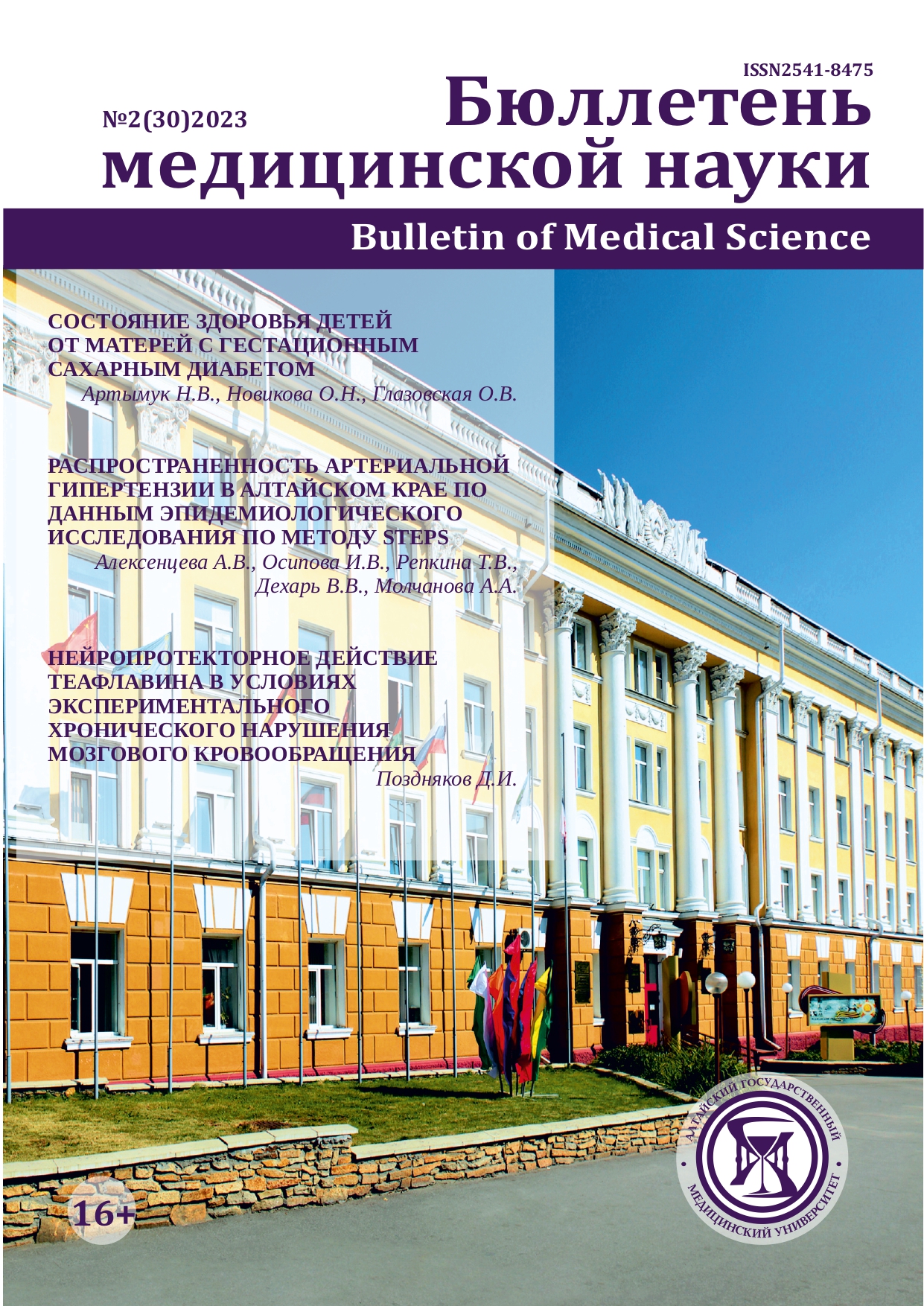LACTOFERRIN AS A DIAGNOSTIC MARKER FOR CONGENITAL INFECTIOUS DISEASES IN NEWBORNS OF MOTHERS WITH ACUTE CHLAMYDIA INFECTION
UDC 618.3-06:616.98-053.3
DOI:
https://doi.org/10.31684/25418475-2023-2-24Keywords:
congenital infection, Chlamydia trachomatis, lactoferrinAbstract
The purpose of the study: The possibility of using the determination of the level of lactoferrin (LF) in the blood and amniotic fluid of pregnant women with acute chlamydia infection in the diagnosis of congenital infectious diseases of the fetus and newborn. Materials and methods. Venous blood and amniotic fluid were studied in 125 women at 37-41 weeks of gestation with chlamydia infection with various variants of its course. The first group included 83 pregnant women with acute chlamydia infection (PCR test +, IdM+, IgG+/-); of which 44 had children with congenital infectious diseases and 39 had healthy children. The second group (comparison group) consisted of 42 pregnant women with Chlamydia trachomatis (PCR test, IdM, IgG+), of which 22 had newborns with VIZ and 20 had healthy children. Comparing the indicators analyzed with the median measured in women without infectious load who gave birth to healthy children, these estimates were obtained from the database No. 2020621918 "Clinical characteristics of pregnant women taking into account the presence and severity of intrauterine infection". The level of lactoferrin in the blood serum and amniotic fluid was determined by solid-phase enzyme immunoassay. Checking the normality of the distribution (the Shapiro-Wilkes criterion was applied) revealed statistically significant deviations from the normal distribution law for all features considered. The descriptive statistics of the quantitative characteristics are represented by the median and interquartile range – Med(Q1-Q3). The comparison of 4 groups among themselves on a quantitative basis was carried out using the Kraskel-Wallis criterion, and a posteriori comparisons were carried out using the Dunn criterion. Comparison of the indicator in each group with the median measured in healthy women was performed using a single-sample Wilcoxon criterion. Results. In the blood serum of pregnant women with acute infection, as well as carriers of Chlamydia trachomatis and the birth of VIZ-positive children, an increased concentration of lactoferrin (LF <4.0 g /l-;) was found, compared to protein indicators in pregnant women who gave birth to healthy children. The level of LF in the amniotic fluid was statistically significantly lower in the acute form of chlamydia infection and in the birth of children with congenital infectious diseases. Conclusion. Determinement of lactoferrin levels in blood serum and amniotic fluid in pregnant women with CHI allowed us to identify a prenatal diagnostic criterion for congenital infectious diseases of the fetus and newborn.
Downloads
References
Downloads
Published
How to Cite
Issue
Section
License
Copyright (c) 2023 Вероника Сергеевна Гребнева, Людмила Владимировна Ренге, Екатерина Юрьевна Григорьева, Анна Егоровна Власенко

This work is licensed under a Creative Commons Attribution 4.0 International License.












